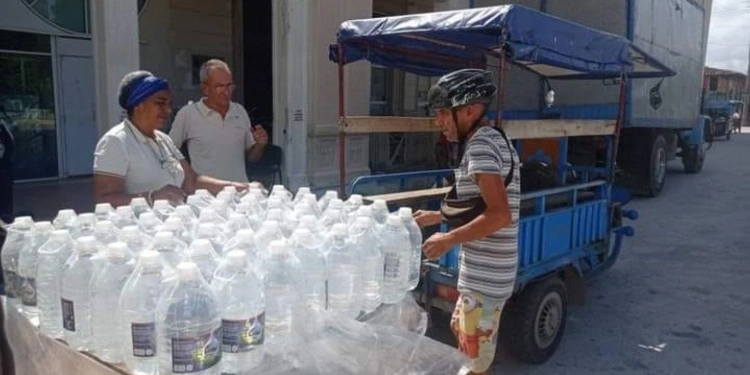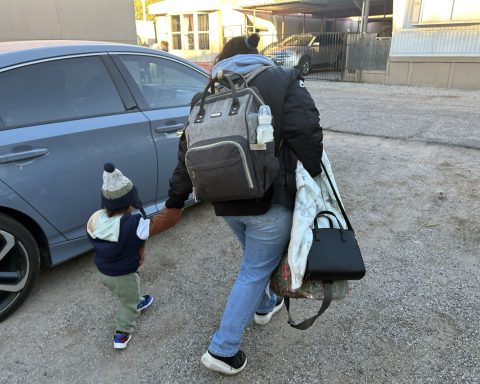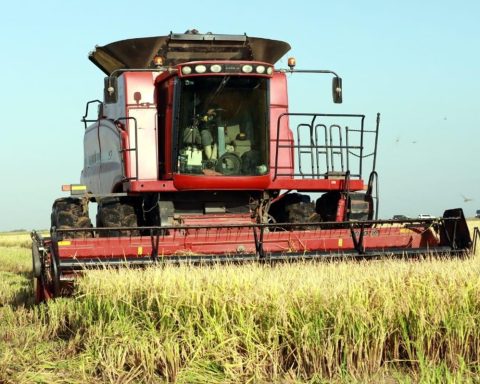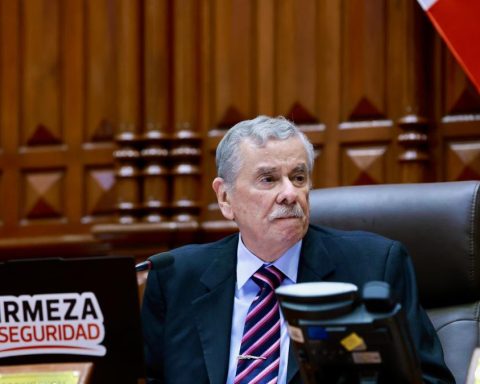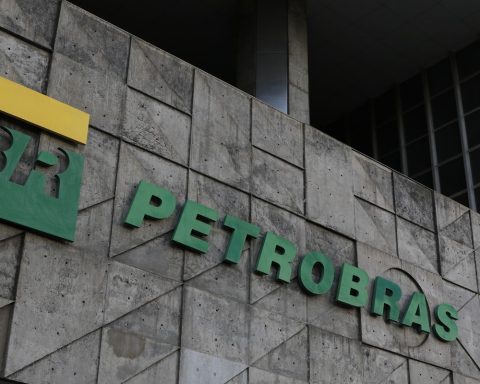SAN LUIS POTOSÍ, Mexico.- The Cuban regime began the sale of water bottled water to residents of the Van Toy 2 neighborhood, in the municipality of Caibarién, Villa Clara, through the Foreign Currency Collection Stores (TRD), in the midst of a water crisis that has kept the people of Villa Clara without access to this resource.
In several Publications In a follow-up to the issue by official journalist Henry Omar Pérez, reference was made to the event caused by the collapse of the pump at Well 8, almost a month ago. “Given the current contingency, a policy of distributing bottled water has been implemented through the TRD chain of stores, associated with the Bodegas de Comercio,” Pérez wrote on social media.
The stripes of water Five-liter bottles are sold at a cost of 85 Cuban pesos and are distributed through the ration book. According to the journalist, they intend to cover 30 stores, “ensuring that the most vulnerable groups have access to this vital resource.”
For her part, María del Rosario Urbay Ceballos, deputy mayor of the Administration Council, told the official media that they have “prioritized“Children from zero to 13 years old will be given gallons of water and then they will move on to assist the elderly who live alone, pregnant women and vulnerable families. They have received 4,255 gallons of water so far,” he said.
Yoarkis López González, TRD’s commercial manager in Caibarién, said that they are “aware” of the need for water: “We have intensified our efforts to ensure that access to bottled water is as efficient as possible. In addition, we maintain a constant dialogue with local authorities to find ways to improve the situation.”
The neighbors were quick to question the measure, which exposes the regime’s inefficiency in guaranteeing citizens access to vital liquid, profiting from such a crisis.

“It is difficult and worrying that we have to buy bottled water, but we have organized ourselves among neighbors to make a joint order and thus reduce costs. Unity has helped us to cope with this situation,” neighbor María González told pro-government journalist Pérez.
The comments did not lack complaints about the precariousness of life in the Van Troy 2 municipality and the opportunism of the regime in that context.

“What solidarity TRD has, why don’t they give it away, what can we solve with a gallon, for God’s sake, how much we lack everything, this country is a business and its leaders with everything, they should be ashamed, blockade or blockade, take off your mask because they are going to kill us here,” wrote an Internet user.
At the closing of this note, the Villa Clara authorities confirmed that well eight in Caibarién began pumping approximately two hours ago and the system is expected to remain stable.
However, the supply has not been fully restored and water continues to be sent in tankers until the problem is solved.
Since Wednesday, after a month without water, the communities of Bartolomé, Reforma and El Crucero began receiving water.
However, just a week ago, the authorities organised the Caibarién Water Carnival, which included a parade of floating floats on the boardwalk, food and drink sales, and lots of dancing, despite the water and energy emergency that the area is experiencing.
The crisis of access to water
The water supply crisis The current drinking crisis in Cuba affects more than 600,000 people across the country, according to figures provided by the regime itself.
According to the president of the Water and Sanitation Business Group, José Antonio Hernández Álvarez, quoted by the official Granmawater shortages are affecting several provinces in the country, some of which have more than 30,000 customers without service. Among the hardest hit are Pinar del Río, Artemisa, Santiago de Cuba, Granma, Villa Clara, Cienfuegos and Holguín.
In HavanaThe figure is even more alarming, with more than 130,000 people affected. These official figures underline the seriousness of the problem and how the collapse of essential services is a constant in the lives of Cubans under the regime.
The government has pointed out two main causes for this problem: the breakdown of a significant amount of pumping equipment and the instability of the National Electric Energy System (SEN).
